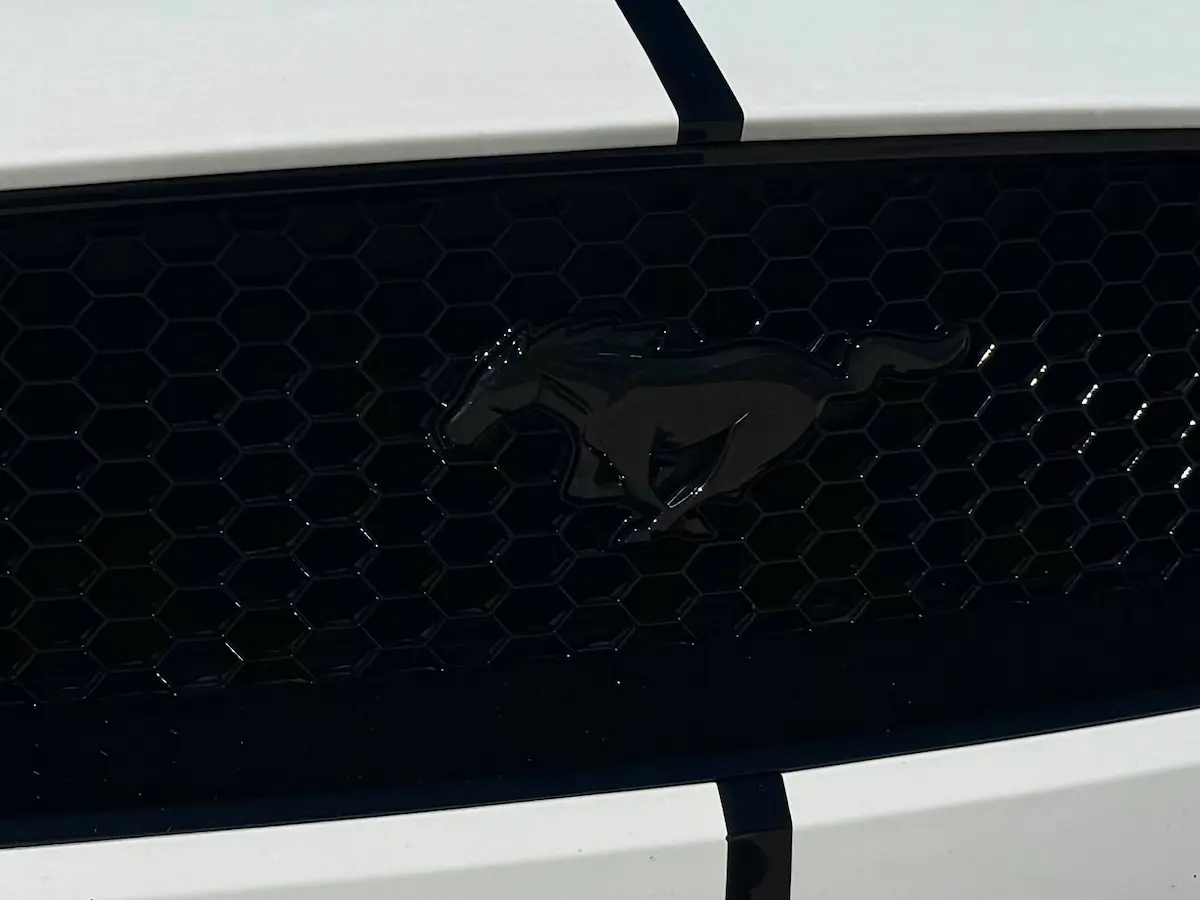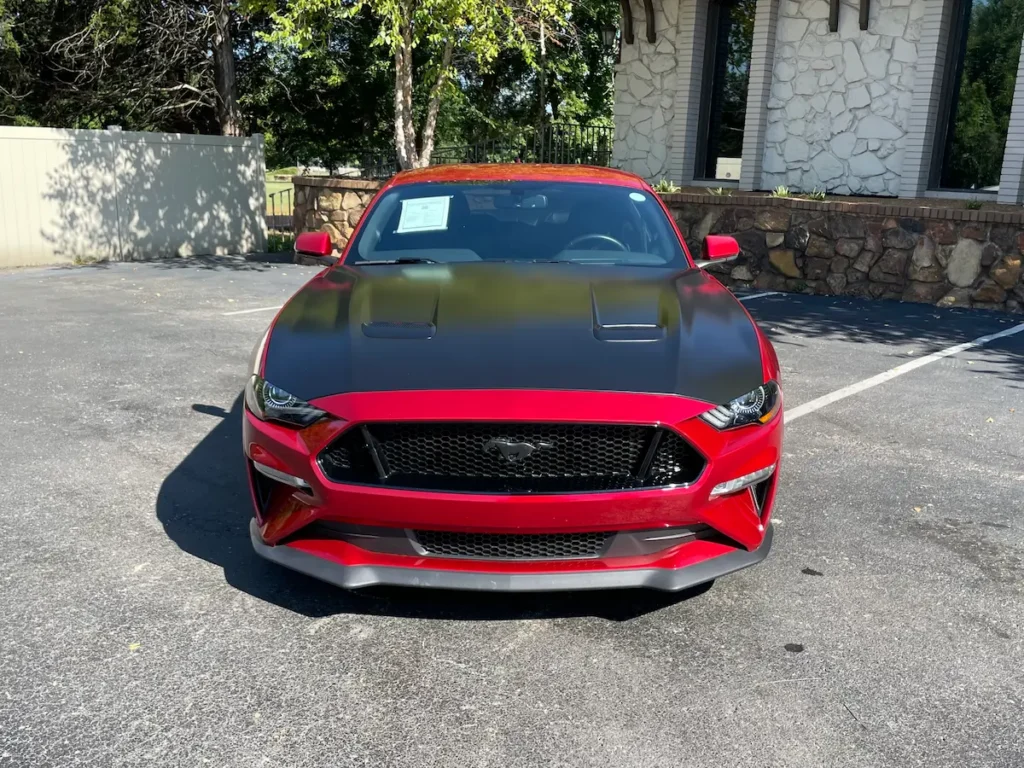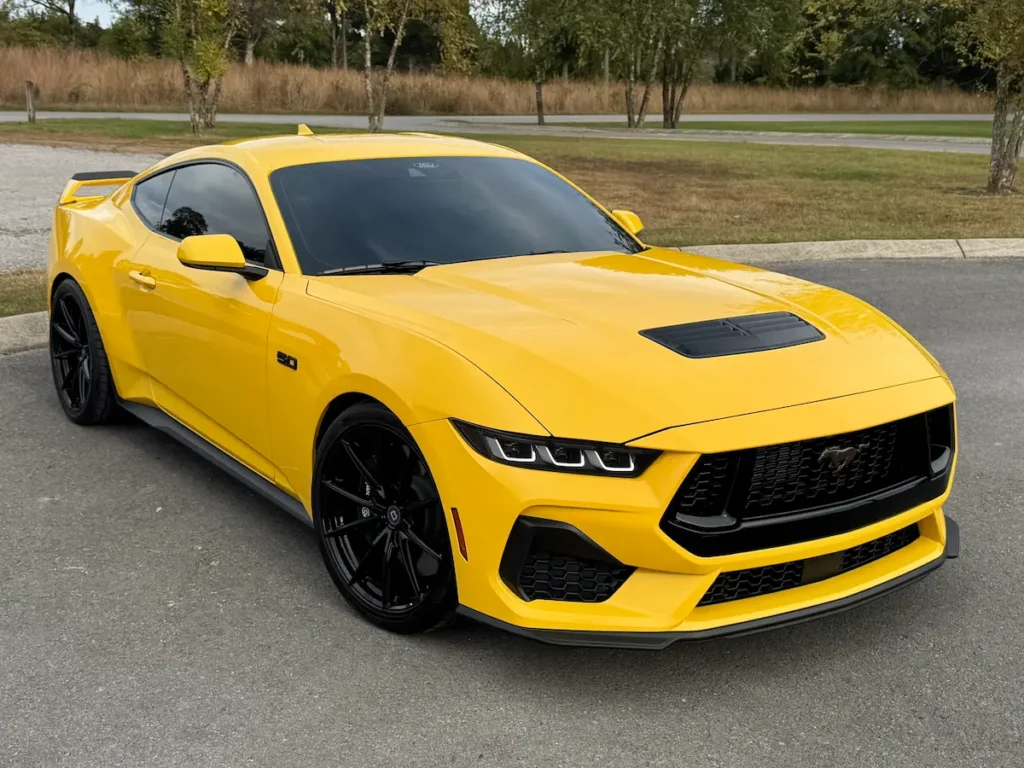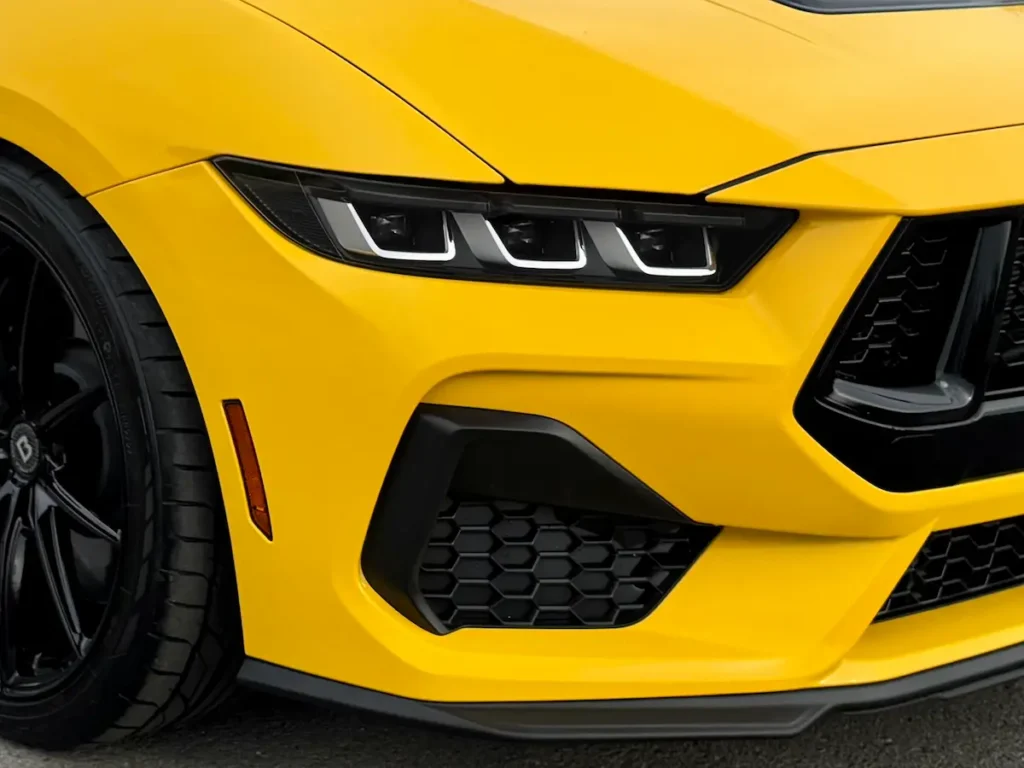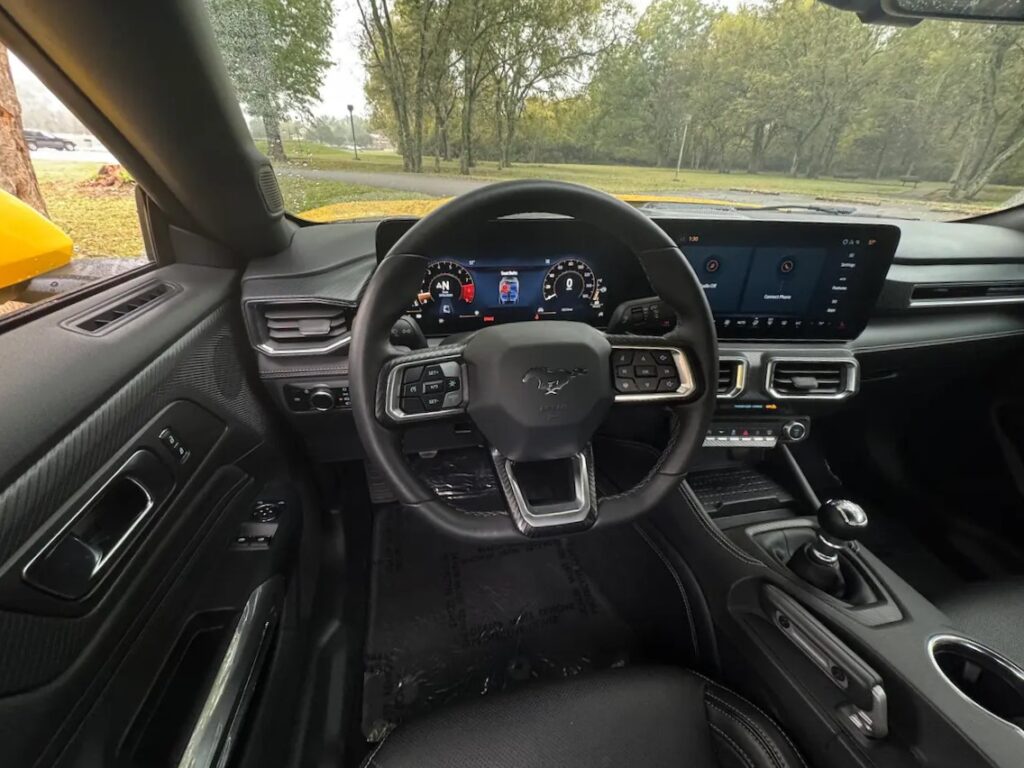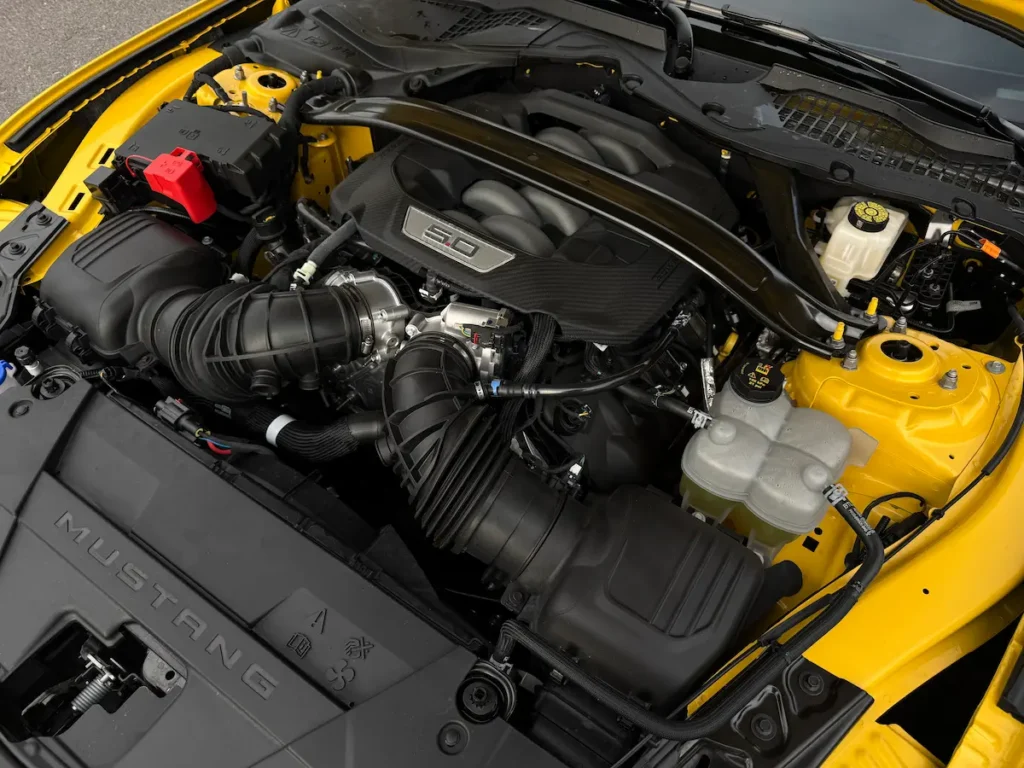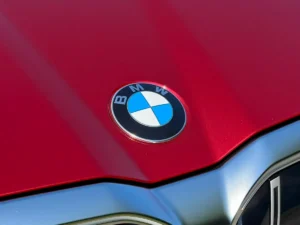Used Ford Mustang Buyer’s Guide: Common Problems, Best Trims & Top Years to Buy
The Ford Mustang has always been one of those cars people connect with right away. Maybe it’s the sound, the shape, or the feeling you get just sitting behind the wheel. The Mustang has a way of making every drive feel a little more exciting. And the best part? You don’t need a brand-new model to enjoy what makes it special.
Today’s used Mustang market is full of great options, from efficient EcoBoost models to growling V8 GTs and track-ready performance trims. Whether you want something practical, something fun, or something that makes every commute feel like your favorite backroad, there’s a Mustang out there that fits.
This guide will walk you through trims, specs, issues, and the top years to buy, focusing mainly on 2020 and newer Mustangs. We’ll also touch on earlier generations to give you the full picture of how the Mustang evolved into the modern models you’ll be shopping for.
Table of Contents
Model History & Evolution of the Ford Mustang
Few cars have a story as vibrant as the Ford Mustang. Every generation brought something different to the road with more power, sharper design, and better tech, yet the spirit stayed the same: a fun, emotional, unmistakably American performance car. Here’s how the Mustang grew from a cultural spark to a modern performance icon.
First Generation (1964–1973): The Beginning of an Icon
The Mustang arrived like a lightning bolt. It was stylish, affordable, and instantly customizable, something no other car offered at the time. What started as a simple, sporty coupe quickly evolved into a true muscle hero with the GT, Boss, and Mach 1 trims. This era cemented the Mustang’s identity: bold styling, plenty of personality, and performance that made everyday drivers feel like weekend racers.
Fox Body (1979–1993): The Rebellion Years
If the original Mustang was the movie star, the Fox Body was the street-wise brother who refused to follow the rules. Lightweight, easy to modify, and full of attitude, it became a favorite among tuners and drag racers. Fuel injection, updated interiors, and improved suspension arrived over the years, but the car kept its raw, analog soul. It’s no wonder Fox Bodies still show up at car meets decades later.
SN95 & New Edge (1994–2004): The Modern Makeover
The Mustang stepped into the modern era with smoother lines, better comfort, and major safety updates. When the sharp-edged New Edge design hit in 1999, everything felt more purposeful. Power crept upward, the SVT Cobra raised the performance ceiling, and Ford experimented with tech that wouldn’t return to the mainstream Mustang lineup for years, including independent rear suspension on the Cobra. It was proof that the Mustang could evolve without losing its fun factor.
S197 (2005–2014): Retro Revival, Modern Power
In the mid-2000s, the Mustang leaned into nostalgia, and it worked. The S197 brought back the long-hood, short-deck proportions of the classic era while adding real engineering improvements behind the scenes. The game-changing moment came in 2011, when Ford introduced the 5.0L Coyote V8. Suddenly, the Mustang wasn’t just cool again. It was quick, refined, and ready to punch far above its price point. Many enthusiasts still consider this generation a turning point.
S550 (2015–2023): The Global Performance Era
The S550 was the Mustang’s “grow-up” moment. For the first time, it came with independent rear suspension across the board—instantly improving ride quality and handling. Turbocharged EcoBoost engines added efficiency without killing the fun. The cabin became more upscale, SYNC 3 made tech user-friendly, and driver-assist features brought the Mustang into the modern age.
A major refresh in 2018 sharpened the styling, boosted power, added a 10-speed automatic, and made MagneRide suspension available. Suddenly, the Mustang wasn’t just competing with traditional rivals—it was challenging European sports cars.
S650 (2024–Present): The Digital Performance Generation
The newest chapter blends modern tech with old-school muscle attitude. Inside, the Mustang transforms with a dual-screen setup, customizable graphics, and a cockpit that feels more performance-focused than ever. Outside, the design becomes sharper and more aggressive. Under the hood, the updated Coyote V8 gains more power through dual air intakes and refined tuning.
The breakout star is the Dark Horse, a track-focused variant with strengthened internals, upgraded cooling, and a personality that feels like the spiritual successor to past-era specialty Mustangs. Across the lineup, the S650 stays loyal to Mustang character, but with more tech, more capability, and more confidence.
Ford Mustang Specs, Trims & Features for Used Buyers
Understanding the trims and how the Mustang has evolved over the past few years makes comparing used models much easier. The following breakdown highlights the most important features, performance changes, and buyer-friendly insights from 2020 through the latest 2026 model year, all in a clear, streamlined format.
Mustang Trim Overview (What Each Trim Represents)
While the Mustang name has carried many trims over the decades, this guide focuses on the versions you’ll commonly find from 2020 and newer. Some trims existed before these years, but the ranges below refer specifically to their availability within the modern 2020+ used market.
Here’s a clear breakdown:
EcoBoost (Available 2020–2026)
A turbocharged 2.3L four-cylinder known for strong torque, good fuel economy, and surprisingly quick acceleration. Perfect for drivers who want Mustang style with lower running costs.
EcoBoost Premium (Available 2020–2026)
Adds premium touches like upgraded materials, larger screens, superior audio options, ambient lighting, and available heated/cooled seats. A smart blend of comfort and efficiency.
GT – 5.0L V8 (Available 2020–2026)
The classic Mustang formula. The Coyote V8 produces 450–480+ hp depending on the model year and remains one of the most respected modern performance engines.
GT Premium (Available 2020–2026)
Combines the GT’s V8 power with an upscale interior, premium tech, upgraded wheels, and additional appearance packages. Ideal for buyers who want performance with extra refinement.
Mach 1 (Available 2021–2023)
While the Mach 1 name has a long history, this modern performance-focused version was only produced from 2021–2023. It sits between the GT and GT500, offering upgraded cooling, track-ready suspension, unique design cues, and 470 hp.
Dark Horse (Available 2024–2026)
A new addition for the S650 generation. Features a strengthened 5.0L V8 with 500 hp, enhanced cooling, MagneRide suspension, performance brakes, and aggressive styling. The most serious non-Shelby Mustang currently available.
GTD (Available 2025–2026)
A race-inspired halo model built with GT3 technology and extreme aerodynamics. The Mustang GTD is engineered for supercar-level performance, offering advanced suspension, active aero, and a target of over 800 hp. Ultra-limited and aimed at collectors and track enthusiasts.
Shelby GT350 (Final production year: 2020)
While the GT350 was available for years before 2020, 2020 was its final model year. Known for its flat-plane-crank 5.2L V8, exotic sound, and rising collector value.
Shelby GT500 (Available 2020–2022)
A 760-hp supercharged powerhouse with a dual-clutch transmission. Among the most capable Mustangs ever built, combining brutal acceleration with surprisingly refined road manners.
Now that you know what each modern Mustang trim offers, it is just as important to understand how the Mustang has changed from year to year. Even within the same trim level, such as the EcoBoost, GT, Mach 1, Dark Horse, or any of the Shelby models, updates to power, technology, features, and design can make some model years a better choice than others. The next section highlights the key changes from 2020 through 2026 so you can compare trims and model years with confidence.
Year-to-Year Specs & Changes That Matter Most
Each model year brings meaningful updates that affect performance, features, and used-market value. This breakdown focuses on what shoppers care about most when comparing modern Mustangs (2020 and newer) — power, tech, trims, and real-world buying advantages.
2020 Mustang — A High-Variety, High-Performance Year
Key Specs & Highlights:
- GT: 460 hp
- EcoBoost High Performance Package debuts
- SYNC 3 infotainment
- Analog-leaning interior design
- Manual or 10-speed automatic transmission
Notable Trims:
- Shelby GT350 (final year)
- Shelby GT500 (760 hp)
- EcoBoost / EcoBoost Premium
- GT / GT Premium
Used-Buyer Insight:
2020 is one of the best years for shoppers who want performance variety, especially with the availability of both Shelby models and the high-output GT.
2021–2023 Mustang — The Peak Value Years of the S550
While these years share the same underlying generation, several meaningful differences help buyers compare models more confidently.
2021 Mustang
- GT retains its 460-hp output
- Mach 1 returns with 470 hp and significant track hardware
- Additional active-safety tech becomes available
Why it matters:
A strong balance of power, features, and price—often one of the best V8 values on the used market.
2022 Mustang
- GT output adjusts to 450 hp
- Additional appearance/performance packages offered
Mach 1 continues
Why it matters:
Delivers the same overall feel as a 2023 model but often at a lower used-market cost.
2023 Mustang (Final S550 Year)
- GT continues with 450–480 hp depending on configuration
- Mach 1 concludes its run
Final year for the mixed analog/digital S550 interior
Why it matters:
The 2023 Mach 1 remains a standout—its performance hardware often exceeds what’s included in a base 2024+ GT.
2024–2026 Mustang — The Modern, Tech-Forward S650 Era
The Mustang enters its most advanced era with a complete interior redesign, new technology, and updated powertrains.
2024 Mustang: The First Year of the New Generation
- All-new fully digital cockpit with dual screens
- Updated Coyote V8 with dual air intake / dual throttle body
- Refined EcoBoost tuning with more efficiency
- Sharper styling inside and out
- Dark Horse performance trim introduced
- Upgraded chassis tuning and steering feel
Why It Matters
2024 delivers the biggest leap in Mustang tech and design in nearly a decade. It gives buyers the full S650 experience without paying the premium of later refresh years.
2025 Mustang: More Models, More Refinement
- Platform and powertrains mostly carry over
- Introduction of the GTD, the most advanced Mustang ever built
- 60th Anniversary special-edition options
- Improved software stability and infotainment refinements
- Slight updates to available colors and packages
Why It Matters
2025 adds desirable specialty trims and refinement, making it a sweet spot for buyers who want “nearly new” S650 tech at a slightly softer used-market price compared to 2026.
2026 Mustang: The Polished S650 Refresh
- Sharper exterior tweaks and updated aero
- Improved cabin materials and customization options
- Enhanced digital interface and software
- EcoBoost tuned around 315 hp
- GT output 480+ hp
- Further refinements to noise reduction and ride quality
Why It Matters
2026 represents the most refined version of the S650 so far — ideal for buyers who want the latest styling, cleanest software, and improved interior quality.
| Priority | Best Years | Reason |
|---|---|---|
| Most Modern Tech & Interior | 2024–2026 | Fully digital cockpit, updated design, improved materials |
| Best V8 Value | 2021–2023 GT | Strong performance with more approachable pricing |
| Best Track-Ready Used Buy | 2021–2023 Mach 1 | Superior cooling, suspension, and hardware |
| Best Collector Potential | 2020 GT350 / GT500 | Limited-run performance icons |
| Best Daily-Driver Value | 2021–2024 EcoBoost Premium | Efficiency, comfort, and newer tech for less |
Read Car and Driver’s in-depth Ford Mustang review for additional insights
Used Ford Mustang Guide: What to Check, Problems & Competitors
Choosing the right used Ford Mustang isn’t hard, but it does help to know what to look for. Mustangs come in different trims, different personalities, and different condition levels depending on how they were driven and cared for. Below is a simple, practical guide that walks through what matters most when shopping for a used one — plus a quick comparison to its closest rivals.
What to Look For When Buying a Used Ford Mustang
Check How the Car Was Used
Some Mustangs live easy lives as daily drivers. Others spend weekends at track days or drag strips. Neither is “bad,” but both deserve different levels of inspection.
Good signs:
- Normal tire wear (not shredded shoulders)
- Even brake wear
- Clean engine bay
- Smooth idle
Red flags:
- Strong aftermarket tuning without documentation
- Mismatched tires
- Persistent ticking, knocking, or hesitation
- Sloppy shifting in manual cars
A Mustang that’s been driven hard isn’t automatically a problem — the key is whether it’s been maintained.
Maintenance History That Matters on a Used Mustang
Mustangs, especially V8 models, reward regular service. When you’re looking at a used one, make sure the basics were done on time.
Important items include:
- Oil changes (especially on V8 models)
- Transmission fluid intervals
- Differential fluid checks
- Coolant service
- Brake and clutch wear
The Coyote V8 is known for being tough, but like any engine, it needs clean oil and proper service to stay happy.
Best Mustang Trims for Different Types of Drivers
A Mustang can be many things — a commuter, a weekend toy, a track car, or a road-trip cruiser. Knowing how you plan to use it helps narrow your trim choice:
- Daily driver: EcoBoost, EcoBoost Premium
- Balanced excitement: GT
- Luxury feel + V8: GT Premium
- Track-ready: Mach 1 or Dark Horse
- Collector’s piece: GT350 or GT500
This keeps you from overbuying or underbuying — the sweet spot is picking a Mustang that fits your actual lifestyle.
Understand Common Mustang Issues
No car is perfect, and Mustangs have their quirks — but most are simple and well-documented.
EcoBoost:
- Look for signs of hard tuning
- Check for oil leaks from seals on higher-mileage cars
GT (V8):
- Occasional manual transmission notchiness (MT82 era)
- Some ticking noises are normal, but loud knocking is not
Older S550 models:
- Rattles in early cabin designs
- Occasional differential whine
Most issues are mild and easy to address when caught early.
Mustang vs Camaro vs Challenger: Honest Comparison
Before choosing a used Ford Mustang, it’s smart to compare it with similar V8 (2022) models. Below is a straightforward Mustang vs Camaro vs Challenger comparison to help you see the differences that matter.
| Category | Mustang GT | Camaro SS | Challenger Scat Pack |
|---|---|---|---|
| Power | ~450–480 hp | ~455 hp | ~485 hp |
| Acceleration | Quick, ~4.1 sec 0–60 | Quickest, ~4.0 sec | Strong but slightly slower, ~4.2 sec |
| Driving Feel | Balanced & sharp | Track-focused & grippy | Straight-line muscle, less agile |
| Comfort | Medium-firm | Firmest | Softest & roomiest |
| Practicality | Decent | Least practical (visibility + space) | Most practical (size + comfort) |
| Fuel Economy | Best of group | Middle | Worst of group |
| Used Value | Holds value well | Usually best prices used | Prices vary; depreciation higher |
Our Take:
Mustang GT: Offers a strong balance of power, handling, and efficiency. It’s neither the most powerful nor the largest, but it delivers well-rounded performance that fits a wide range of driving styles.
Camaro SS: Prioritizes grip and track capability. It delivers excellent performance numbers but gives up interior space and everyday visibility in exchange.
Challenger Scat Pack: Focuses on comfort, space, and straight-line strength. It has the most room and torque, but its size and weight make it less agile than the others in corners.
Best Used Mustang Years to Buy
For tech lovers:
2024–2026 — all-digital cockpit, updated styling, newest features
For performance per dollar:
2021–2023 GT — amazing V8 value without modern pricing
For track-focused driving:
2021–2023 Mach 1 — exceptional hardware for the money
For collectors or long-term appreciation:
2020 GT350 / GT500 — rare and high-demand
For comfort + efficiency:
2021–2024 EcoBoost Premium — balanced, modern, and affordable
You can compare these insights with the detailed TopGear Ford Mustang review.
Why Buying a Used Mustang Is a Smart Choice
- The engines (especially the 5.0 Coyote) are known for longevity
- Depreciation is slower than many sports cars
- Maintenance costs are reasonable
- Aftermarket support is massive
- There’s a trim for almost every type of driver
- The Mustang is a “feel-good” car — even a base model has personality
Used Mustangs often hit the perfect sweet spot: the fun and performance of a sports car without the shock of new-car pricing.
Choosing the Right Dealership
Finding the right Mustang is one part of the journey — finding the right place to buy it is the other. A good dealership should make the process feel clear and comfortable, not rushed or confusing. Whether you’re shopping for your first Mustang or upgrading to a new trim, here’s what a dependable dealership experience should look like:
- Transparent vehicle history that’s easy to read and backed by real records
- Flexible test-drive options so you can compare different trims and engines
- Fair pricing based on current market data, not guesswork
- Helpful warranty choices that fit your driving habits
- Financing support for a wide range of budgets and credit situations
- A reputation built on real customer feedback, not flashy promises
Dealerships that check these boxes tend to make the entire buying process easier and more confidence-inspiring. AutoPro Nashville is known for offering this kind of experience, focusing on straightforward guidance and a well-selected inventory that helps shoppers feel sure about the Mustang they choose.
Explore our used Ford Mustang inventory.
Is the Ford Mustang reliable as a used car?
Yes. Modern Mustangs, especially the 5.0L Coyote V8 models, have a strong reputation for long-term reliability when serviced regularly. EcoBoost models are also dependable if they haven’t been aggressively tuned.
What are the most common Ford Mustang problems?
Common issues include manual transmission notchiness (MT82 years), occasional rear differential noise, interior rattles in early S550 models, and minor oil leaks on higher-mileage EcoBoost cars. Most problems are easy to spot and usually inexpensive to address.
Which used Ford Mustang trim is best?
For balanced performance, the GT is the most popular choice. For comfort and features, GT Premium or EcoBoost Premium work well. Enthusiasts often prefer the Mach 1 (2021–2023) or Dark Horse (2024–2026) for track-ready performance.
How many miles is too many for a used Mustang?
Properly maintained Coyote V8s often run well past 150,000 miles. EcoBoost engines also last long with good service. Condition, service history, and ownership style matter more than mileage alone.
Is the Mustang expensive to maintain?
Maintenance costs are moderate for a performance car. Oil changes, brakes, and tires are reasonable, and parts are widely available. V8 models cost slightly more than EcoBoost trims due to larger components.
What should I check before buying a used Mustang?
Look for complete service records, signs of aftermarket tuning, condition of tires and brakes, transmission behavior, and any unusual engine noises. A clean inspection and history report make a big difference.
